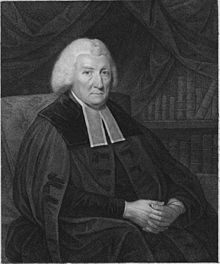c.1787 HUGH BLAIR AUTOGRAPH LETTER - SCOTTISH MINISTER - STAMPLESS FOLDED LETTER
Description:
Condition Report:
Hugh Blair | |
|---|---|
 | |
| Born | 7 April 1718 |
| Died | 27 December 1800 (aged 82) |
| Nationality | Scottish |
| Occupation(s) | theologian, author, rhetorician |
| Notable work | Sermons (1777–1801) |

Hugh Blair FRSE (7 April 1718 – 27 December 1800) was a Scottish minister of religion, author and rhetorician, considered one of the first great theorists of written discourse.
As a minister of the Church of Scotland, and occupant of the Chair of Rhetoric and Belles Lettres at the University of Edinburgh, Blair's teachings had a great impact in both the spiritual and the secular realms. Best known for Sermons, a five volume endorsement of practical Christian morality, and Lectures on Rhetoric and Belles Lettres, a prescriptive guide on composition, Blair was a valuable part of the Scottish Enlightenment.
Life
Blair was born in Edinburgh into an educated Presbyterian family. His father was John Blair, an Edinburgh merchant.[1] He was great-great-grandson of Rev. Robert Blair of St. Andrews and great nephew of Very Rev. David Blair the Moderator of the General Assembly in 1700.[2]
From an early age it was clear that Blair, a weakly child, should be educated for a life in the church. Schooled at the High School, Blair studied moral philosophy and literature at the University of Edinburgh, where he graduated M.A. at the age of twenty-one. His thesis, "Dissertatio Philosophica Inauguralis de fundamentis et obligatione legis naturae",[3] serves as a precursor to the later published Sermons in its discussion of the principles of morality and virtue.[4]
In 1741, two years after the publication of his thesis, Blair received his license as a Presbyterian preacher. Shortly thereafter, the Earl of Leven heard of Blair's popularity and presented him to the Parish Church of Collessie in Fife, as their minister.
By 1743 Blair was elected as the second charge of the Canongate Kirk, under Rev James Walker in first charge. Although some records say he reached "first charge" this is not the case.[5] Blair was appointed to the sole charge of Lady Yester's Kirk in 1754, and four years later in 1758 was translated to the second charge of the High Kirk of St Giles under Rev Robert Walker as "first charge". They became very close friends.[6] Despite being "second charge" this was nevertheless one of the highest positions that a clergyman could achieve in Scotland. Blair maintained this position for many years, during which time he published a five-volume series of his addresses entitled Sermons.
Having attained ultimate success in the church, Blair turned to matters of education. In 1757 he was presented with an honorary degree of Doctor of Divinity by the University of St Andrews[5] and began to lecture in Rhetoric and Belles Lettres for the University of Edinburgh in 1759. At first Blair taught without remuneration from the university and was paid direct by his students, but the popularity of his course led to the institution of a permanent class and Blair was made Professor Rhetoric and Belles Lettres at the university in 1762, a position ratified by King George III. He retained this position until his retirement in 1783. After retirement, Blair published several of his lectures in Lectures on Rhetoric and Belles Lettres.
In 1773 Blair was living at Argyle Square on the south side of Edinburgh's Old Town. The property was demolished in the mid-19th century to create Chambers Street.[7]
In 1777, at the point of its creation, he was appointed Chaplain to the 71st Regiment of Foot, initially based at Edinburgh Castle.[5]
In 1783 Blair was one of the founder members of the Royal Society of Edinburgh. He served as its Literary President from 1789 to 1796.
Blair's life was very full in both the public and the private spheres. As a central figure in the Scottish Enlightenment, he surrounded himself with other scholars in the movement. Hume, Carlyle, Adam Smith, Ferguson, and Lord Kames were among those Blair considered friends.
He had a summer residence in the small village of Restalrig north-east of Edinburgh.[8]
He died at home in Argyle Square on 27 December 1800.[9]
Blair is buried near his home, in Greyfriars Churchyard in Edinburgh.[1] The grave was originally unmarked, but a memorial was erected on the south-west section of Greyfriars Kirk to commemorate him, lying between tablets to Allan Ramsay and Colin MacLaurin. It is inscribed in Latin therefore gives his name as Hugo Blair.
He was succeeded in his chair at Edinburgh University by Andrew Brown (1763-1834).[10] His position as second charge of St Giles was filled by Rev George Husband Baird.[5]
Family
Blair had a very loving marriage to his cousin, Katherine Bannatine, whom he married in April 1748.[1] Katherine was the daughter of Very Rev James Bannatine minister of Trinity College Church in north-east Edinburgh. He had been Moderator of the General Assembly of the Church of Scotland in 1739.[5]
Together they had two children: a son who died at birth and a daughter Katherine (1749-1769) who died at the age of 20 i.e. both children predeceased them. Blair also outlived his wife, who died in February 1795 five years before his own death in December 1800.[4] He was described as "amiable, kind to young authors, and remarkable for a harmless, but rather ridiculous vanity and simplicity".[11]